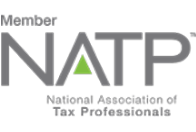At 1099 Accountant, the online bookkeeping, tax and accounting service firm believes that knowledge is power. An educated taxpayer and business owner makes compliance and tax filings more efficient. There are several kinds of 1099’s and we will discuss the most popular.
What is a 1099?
A 1099 form is an informational recording that an entity or person other than your employer paid you money or recorded financial transactions. It informs both the recipient and the Internal Revenue Service that you have income.
1099-B and 1099-DIV
Own stocks for trading or for long term investments? Have you received dividends from these shares or sold some of the stocks you owned? Chances are you’ll receive either of the following Internal Revenue Service (IRS) Tax forms by January to February next year, the IRS 1099-B and IRS 1099-DIV.
1099-B: Proceeds from Broker and Barter Exchange Transactions
As the official IRS name suggests, the 1099-B tax form records proceeds from transactions through a broker and barter exchange.
Broker and Barter Exchange Defined. A broker is any person who buys and sells assets for others while a barter exchange is a person or an organization that serves as the middleman to coordinate exchanges of goods and services within the organization.
The IRS requires a broker to issue a 1099-B for each person for whom the broker has sold stocks, commodities, contracts, debt instruments, options, etc. for cash. They will also issue this form if a person receives cash, stock, or other property from a corporation in which the broker has knowledge that the person has had its stock acquired in an acquisition of control of a corporation. Barter exchange are required to issue 1099-B for each person who contracts with them for exchange of properties or services.
Information in a 1099-B Form. Below are the commonly filled-out boxes in this tax form:
Box 1a – Description of the property sold or traded (Example: 100 sh. of XYZ Co.)
Box 1b – Date of when the property was originally acquired
Box 1c – Date of sale or disposal
Box 1d – Proceeds from sale or disposal
Box 1e – Acquisition cost or adjusted basis of securities sold
Box 2 – Indicates whether gain or loss from the reported transaction is either short-term,
long-term, or ordinary.
Box 4 – Shows the amount of federal income tax withheld.
Box 13 – Shows the amount received by an individual from bartering transactions.
Short-Term and Long-Term Capital Gains. Capital gains are simply income earned from selling your assets or properties. Income from sale of properties held for at least a year or less are classified as short-term capital gain while income from sale of properties held for more than a year are classified as long-term capital gains. The difference lies on how the government tax these transactions. Generally, you will get lower tax rates for long-term capital gains than short-term capital gains which is taxed at the taxpayer’s current tax rate.
Form 8949 and Schedule D. Information from the 1099-B are summarized in Form 8949 with sections for short-term and long-term capital gains. The total amount of each section will then be transferred to Schedule D and eventually to your annual returns.
1099-DIV: Dividends and Distributions
When a corporation generates profit, they can either decide to use them by reinvesting it back again for further business advancement or they can decide to give some of those income to its shareholders. If you were paid dividends of at least $10, the corporation who paid those dividends will send you and the IRS a copy of the tax form 1099-DIV. You will also receive this form if you were paid in cash or other properties valued at $600 or more as a result of a corporation’s liquidation.
Information in a 1099-DIV Form. Below are the commonly filled-out boxes in this tax form:
Box 1a. Total Ordinary Dividends. Shows all the dividends you received from money market funds, net short-term capital gains from mutual funds, and other distributions on stock. Ordinary dividends less qualified dividends (Box 1b) are being taxed based on the taxpayer’s current rate.
Box 1b. Qualified Dividends. These are the dividends in Box 1a that qualifies for the reduced capital gains rates. To be Qualified, the dividends you received must (a) come from the shares of stocks you owned for at least (61) sixty-one days during the 121-day period that began 60 days before the ex-dividend date, and (b) issued by a U.S. Corporation or qualified foreign corporation. A foreign corporation will become qualified if they are incorporated in a possession of the United States or if a tax treaty exists between the U.S. and the country of incorporation, or if the corporation’s stocks are readily tradable on an established securities market in the United States.
Box 2a. Total Capital Gain Distribution. This reflects your share from the mutual funds’ sale of its own shares within its own portfolio. Note that this is different from Capital Gains which is documented using 1099-B. Income reflected here, like the qualified dividends, are also taxed at lower rates since the IRS allows you to treat this as long-term investments regardless of the actual holding period.
Box 3. Nondividend Distributions. These are distributions that is not paid out of the corporation’s earnings, such as stock distributions. These are non-taxable items.
Box 4. Federal Income Tax Withheld. This amount is deductible to your annual tax payable or will increase your tax refund.
Box 5. Section 199A Dividends. These are qualified dividends paid by Real Estate Investments Trusts (REIT). This is part of the dividends reported in Box1a. Section 199A allows taxpayers to deduct on their taxable income up to 20 percent of the dividends received from REITs. Note that this deduction is not available for C Corporations.
Box 9. Cash Liquidation Distributions. This shows the amount of cash paid to the investor as a result of the corporation’s partial or complete liquidation. IRS mandates that payments of $600 or more in money or other property as part of a liquidation should be reported as part of 1099-DIV tax form. This kind of distribution is in fact a return of capital to the investors and therefore not taxable. However, payments in excess of the cost of investment is subject to capital gains tax.
Box 10. Noncash Liquidation Distributions. This shows the fair market value of noncash properties paid to the investor as a result of partial or complete liquidation.
Box 12. Exempt-Interest Dividends. These are dividends, usually from state issued mutual funds, that are not subject to federal tax but may be subject to state tax.
Schedule B Requirement for Dividends and Interest Income. If the total taxable dividends or interest income you received in a year exceeds $1,500, you are required to prepare a Schedule B tax form.
You may want to consult our tax expert at 1099 Accountant if you have amount in one of those boxes for proper treatment and filing in your annual returns.
At 1099 Accountant, we offer online bookkeeping, tax and accounting services. Contact us toll free at (855) 529 1099, make an appointment https://1099accountant.com/contact/ or send us an email at help@1099accountant.com. We 











